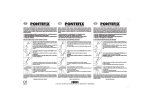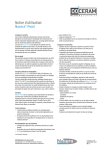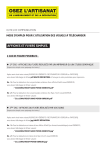Download Manuel d`instructions Instruction Manual
Transcript
HT cubic zirconia system HT cubic system ceramics of type zirconia II, class 5 acc. to ISO 6872 ___________________________________________________________________________________________________________________________________________________________________________________________________________________________________________ ceramics of type II, class 5 acc. to ISO 6872 ___________________________________________________________________________________________________________________________________________________________________________________________________________________________________________ Manuel d‘instructions Instruction Manual Propriétés spécifiques du matériel Material-related characteristics Composition chimique [Gew.%] Chemical Composition [wt%] ZrO2 + HfO2 ≥ 90 ZrO2 + HfO2 ≥ 90 Y 2O 3 < 10 Y 2O 3 < 10 Al2O3 < 0,1 Al2O3 < 0.1 Autres oxydes ≤ 0,005 Propriétés physiques Densité (après frittage) Other oxides ≤ 0.005 Physical specifications 3 [g/cm ] -6 -1 > 6,0 CDT (25-500°C) 10 K Résistance à la fracture MPa√m Résistance à la flexion MPa > 720 E-Module GPa 210 Density (after sintering) 3 [g/cm ] -6 -1 > 6.0 10 CTE (25-500°C) 10 K 4,8 Fracture toughness MPa√m Flexural strength MPa > 720 E modulus GPa 210 Explication des symboles Explanation of symbols Fabricant Manufacturer Date de fabrication Date of manufacture Consulter les instructions Consult instructions for use Utiliser avant Use by Numéro de lot Batch code Numéro d’article Catalogue No. Stocker au sec Store dry 10 4.8 ___________________________________________________________________________________________________________________________________________________________________________________________________________________________________________ Dental Direkt GmbH • Industriezentrum 106-108 • 32139 Spenge • Germany • Tel. 0049 5225 863190 Manuel d'instructions-Instruction Manual_DD cubeX²_Rev. 01_.docx 1/2 HT cubic zirconia system HT cubic system ceramics of type zirconia II, class 5 acc. to ISO 6872 ___________________________________________________________________________________________________________________________________________________________________________________________________________________________________________ ceramics of type II, class 5 acc. to ISO 6872 Manuel d‘instructions Instruction Manual ___________________________________________________________________________________________________________________________________________________________________________________________________________________________________________ 1. Indications Oxyde de zircone hautement translucide pour la fabrication de couronnes anatomiques ou réduites pour application céramique, de ponts jusqu’à 3 éléments dans le secteur antérieur ou latéral, d’inlays / onlays ainsi que de facettes. 1. Indications High translucent zirconia for the manufacture of monolithic or for ceramic veneering reduced partial or single crowns, bridges with up to 3-elements (anterior and posterior region), inlays / onlays and veneers for dental application. 2. Contre-indications Parafonctions (par ex. bruxisme), place insuffisante, préparation inadaptée, intolérance connue à des composants, hygiène buccale insuffisante. 2. Contraindications Para-functional habits (e.g. bruxism), insufficient space, inadequate preparation, known intolerance to the contained components, insufficient oral hygiene. 3. Informations relatives à la sécurité Veuillez lire toutes les informations qui figurent dans la version actuelle de ce mode d‘emploi. Evitez l’inhalation de la poussière de fraisage et de polissage durant le travail. Portez des lunettes de protection et un masque de protection contre les poussières. 4. Manipulation et stockage Veuillez vérifier l’intégrité de l’emballage et du disque lui-même avant la première utilisation. Contrôlez que le contenu corresponde à l’étiquette. N’endommagez pas le matériel. Les disques doivent être stockés dans leur emballage d’origine, dans un environnement frais et sec. Evitez les vibrations, contaminations et contacts avec les fluides. 5. Travail / Construction La manipulation de ce produit doit s’effectuer uniquement par du personnel formé. Schéma Couronne Télescope Pont de 3 éléments Antérieur Postérieur X X XOX Epaisseur de parois [mm] 0,4 0,5 4. Handling and storage Verify the integrity of the packaging and the blank itself before the first processing. Check if the content of the packaging corresponds to the declaration given on the label. Do not use damaged material. Storage only in the original containers in a cool and dry environment. Avoid vibrations, contaminations and contact with fluids. 5. Processing / Designing Handling this medical device should only be allowed to trained staff. Following construction parameters need to be considered: Les paramètres suivants doivent être pris en considération: Indication 3. Safety information Please pay attention to the information in the instruction manual in its current version. Avoid the inhalation of dust particles during processing. Wear protection gloves, safety glasses and a dust mask to prevent irritations of eyes, skin and respiratory system. Section de connecteur [mm²] - 0,5 0,5 Légende: X = Pilier ≥ 10 ≥ 13 O = Pontique Indication Scheme Single crown Telescope Bridge 3-elements Anterior Posterior X X XOX Wall thickness [mm] 0.4 0.5 Connector cross section [mm²] - 0.5 ≥ 10 0.5 ≥ 13 Legend: X = abutment tooth O = pontic Pour les connecteurs, on doit rechercher la plus grande section ovale possible. La hauteur du connecteur est un facteur décisif. La conception du modelage doit soutenir la céramique de recouvrement dans la zone des cuspides et permettre l’application d’une couche homothétique. Les préparations en épaulement ou chanfrein sont recommandées. Please note: Depending on the construction, the connector cross section might need to be of larger dimensions. An oval connector cross section is desirable; the height of the connector is the decisive factor. Frameworks for ceramic veneering need to be designed in a way to support the veneering ceramic in the cusp region and allow a constant layer thickness. Shoulder or chamfer preparation is recommended. 6. Fraisage, frittage et traitements ultérieurs L’usinage des disques doit toujours être réalisé dans une usineuse compatible. Toutes les informations données par le fabricant de la machine doivent être respectées. Un examen visuel des armatures doit détecter les défauts visibles. N’utilisez pas d’armatures endommagées ou contaminées. 6. Milling, sintering and further processing Machining of blanks should always be conducted in the corresponding milling system. All information given by the manufacturer of the machine shall be taken into account. The frameworks need to be examined for visible defects. Do not process damaged or contaminated frameworks. ↑ → ↑ → ↓ Observez svp. nos recommandations de frittage séparées! Cycles de frittages pour fours normaux sans couvercle: Chauffe jusqu’à 900°C (8°C/min), 30 min de maintien à 900°C, Chauffe jusqu’à température finale 1450°C (3°C/min), 120 min de maintien à 1450°C, Refroidissement jusqu’à 200°C (10°C/min). ↑ → ↑ → ↓ Please pay attention to our separate sintering instruction! Sintering cycle for normal furnace filling without cover: Heating up to 900°C (1652°F) with 8°C/min (46°F/min), dwell at 900°C (1652°F) for 30 minutes, heating up to final temp. 1450°C (2642°F) with 3 °C/min (37°F/min), dwell at final sintering temperature 1450°C (2642°F) for 120 min, cooling to 200°C (392°F) with 10°C/min (50°F/min). Evitez un travail ultérieur au frittage, tel que sablage ou meulage. Si des corrections sont inévitables, utilisez des outils diamantés refroidis à l’eau, et soyez certain de ne pas produire de chaleur qui pourrait produire des fissures dans le matériel. Travaillez uniquement avec des outils coupants, recouverts de diamant et avec peu de pression. Les zones sous tension en utilisation clinique (p.ex. connecteurs) ne doivent pas être modifiés. Evitez les angles vifs. Avoid additional mechanical actions after sintering like blasting or grinding. If corrections are inevitable use water-cooled diamond tools for the conditioning and make sure that there is no development of heat, which could lead to cracks in the material. Please work only with sharp, diamond-coated tools and very slight contact pressure. Areas that are under tension in clinical use (e.g. connectors) must not be processed. Do not separate in interdental regions. Avoid sharp edges. 7. Scellement Nous recommandons un scellement conventionnel à l’oxyphosphate de zinc ou un ciment de verre ionomère. Les composites de scellement peuvent être utilisés. Une rétention suffisante et une hauteur de préparation minimale de 3mm sont essentiels. 7. Mounting For anchoring we recommend conventional cementation with zinc oxide phosphates cements or glasionomer cements. Also luting composites may be used. Sufficient retentions and a stump with height of at least 3 mm are essential. Nos produits font l’objet d’un développement continu. Nous nous réservons donc le droit d’effectuer des modifications dans la manipulation ou la composition. Vous trouverez la version actuelle respective des instructions de traitement sous : www.dentaldirekt.de Cette version remplace toutes les versions antérieures. We reserve the right to make changes as a result of the continuous development of our products. Please find the current version of the instruction manual on our website: www.dentaldirekt.de. This version replaces all previous versions. ___________________________________________________________________________________________________________________________________________________________________________________________________________________________________________ Dental Direkt GmbH • Industriezentrum 106-108 • 32139 Spenge • Germany • Tel. 0049 5225 863190 Manuel d'instructions-Instruction Manual_DD cubeX²_Rev. 01_.docx 2/2



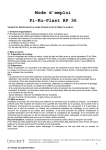
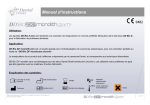
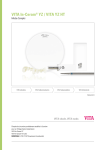
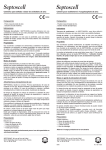
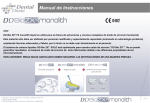
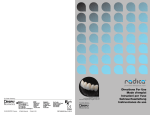
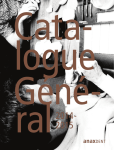

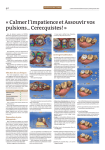

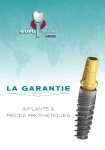
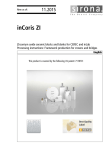
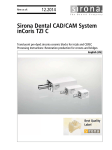
![[U4.44.14] Macro-commande MACR_ECLA_PG](http://vs1.manualzilla.com/store/data/006352131_1-225566218c5f8f51ac107d7f563e24d0-150x150.png)
